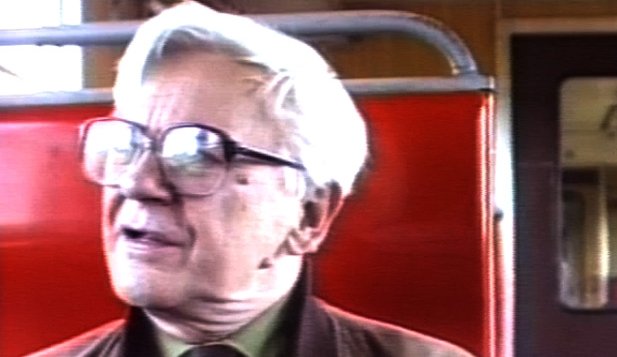And this is how it continued until it came to a very... in ‘77, to the killing of Staszek Pyjas, a student from Kraków, one of our co-workers, one of the most active in Kraków. Staszek Pyj as was found in the entrance to a building in the centre of Kraków, it was an old listed building where the manner in which he was found, the way his body had been arranged, everything pointed to the fact that this was no accident, that his body had been hurriedly dumped. It was done hurriedly because perhaps they'd only wanted to beat him up and not kill him, but when you're giving somebody a bad beating, you can kill them. KOR [Komitet Obrony Robotników (Workers' Defence Committee)] responded by organising a street demonstration at the request of its members in Kraków, the one and only time it did so. There was a massive street demonstration in Kraków, in those days 10,000 people demonstrating in the street was a lot, and there were no police there against the protestors. Perhaps they were afraid that the shock which the killing had generated would cause… the involvement of the police would cause a further chain reaction. But then, once it came to a demonstration, the secret police imagined that they could resort to other methods. The most active members of KOR, myself included, found themselves in prison on Rakowiecka Street. Society responded with a massive protest. Letters of protest began to arrive, letters which must have unnerved the authorities. Ninety-eight miners from Gliwice for instance – this was something new – protested. Farmers from several villages near Grójec sent in their protest as did more farmers from villages in the Rzeszów area. A huge number of priests from the diocese of Przemyśl who were seasoned in their battles with the authorities because of their illegal building of churches for which they didn't have permission but despite this they continued to build them.
I tak to trwało do czasu, kiedy stało... doszło do bardzo – już w ’77 roku – do zabicia Staszka Pyjasa, studenta z Krakowa, naszego współpracownika, jednego z najaktywniejszych w Krakowie. Staszek Pyjas został znaleziony w bramie domu w centrum Krakowa, starego domu, zabytkowego, gdzie okoliczności jego znalezienia, sposób ułożenia ciała, wszystko wskazywało na to, że nie był to żaden wypadek, że w popłochu porzucono zwłoki. W popłochu być może dlatego, że może chciano go zmasakrować, a nie chciano zabić, no niemniej jednak jak się bije mocno, to można zabić. KOR na to po raz jeden jedyny w swoich dziejach, odpowiedział zorganizowaniem demonstracji ulicznych na życzenie zresztą współpracowników z Krakowa. W Krakowie doszło do dużych demonstracji ulicznych – jak na tamte czasy 10 000 osób demonstrujących na ulicach to było dużo i milicji nie wyprowadzono na ulice przeciwko tej demonstracji. Bano się być może, że ten wstrząs jaki spowodowało zabójstwo spowoduje, że wkroczenie milicji spowoduje dalej reakcję łańcuchową. Ale wówczas, jak doszło do demonstracji, bezpieka sobie wyobrażała, że można przejść do innych metod. Najaktywniejsi członkowie KOR-u znaleźli się w więzieniu na Rakowieckiej, ja też. Społeczeństwo odpowiedziało dużą akcją protestacyjną. Zaczęły napływać listy protestacyjne i to listy, które musiały władzę niepokoić. Dziewięćdziesięciu ośmiu górników z kopalni Gliwice na przykład – to było już coś nowego – protestuje. Chłopi z kilku wsi spod Grójca przysyłają protest, chłopi z jakiejś znowu innych wsi w rzeszowskim przysyłają protest. Ogromna ilość księży z diecezji przemyskiej, którzy byli zaprawieni, no, już w konfliktach z władzą przez nielegalne budowanie kościołów, gdyż im nie pozwalano, a mimo to budowali.






